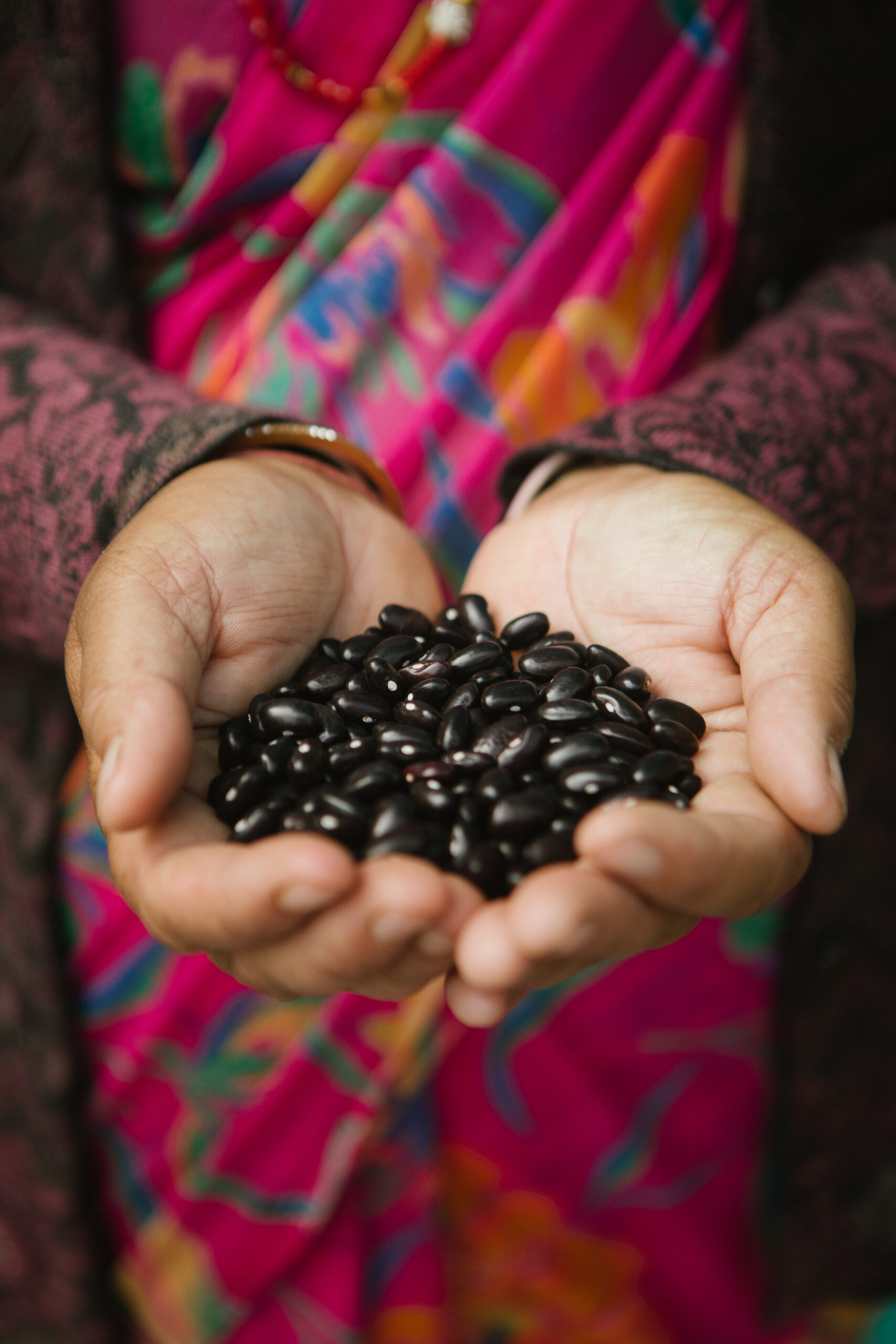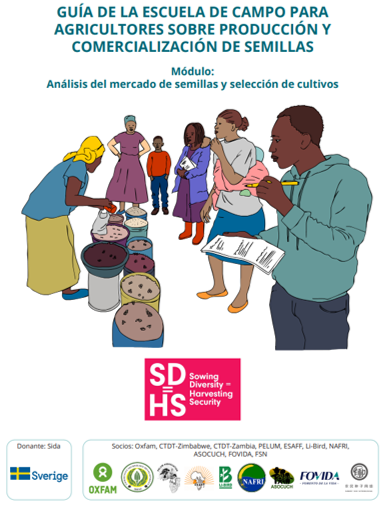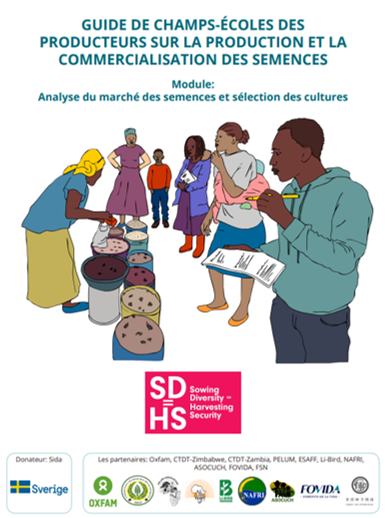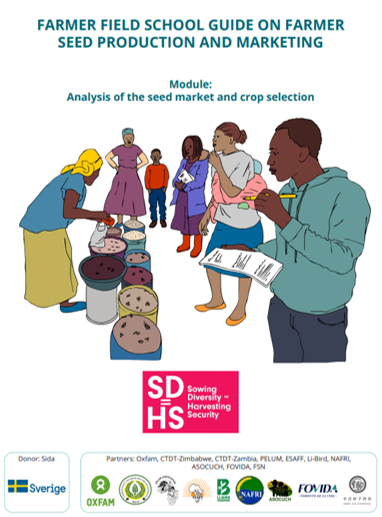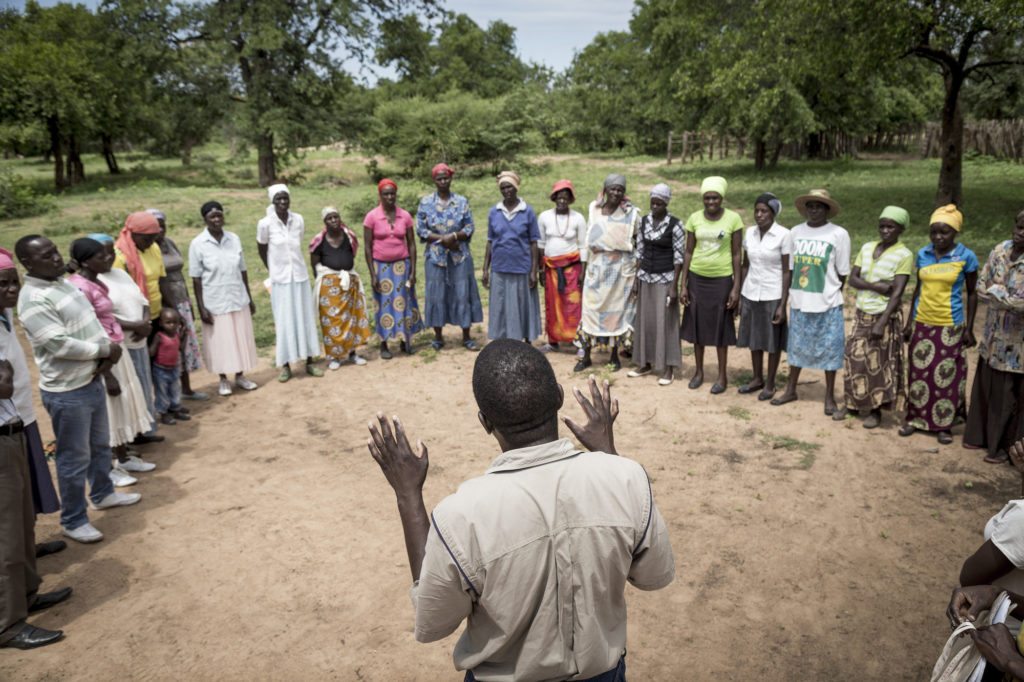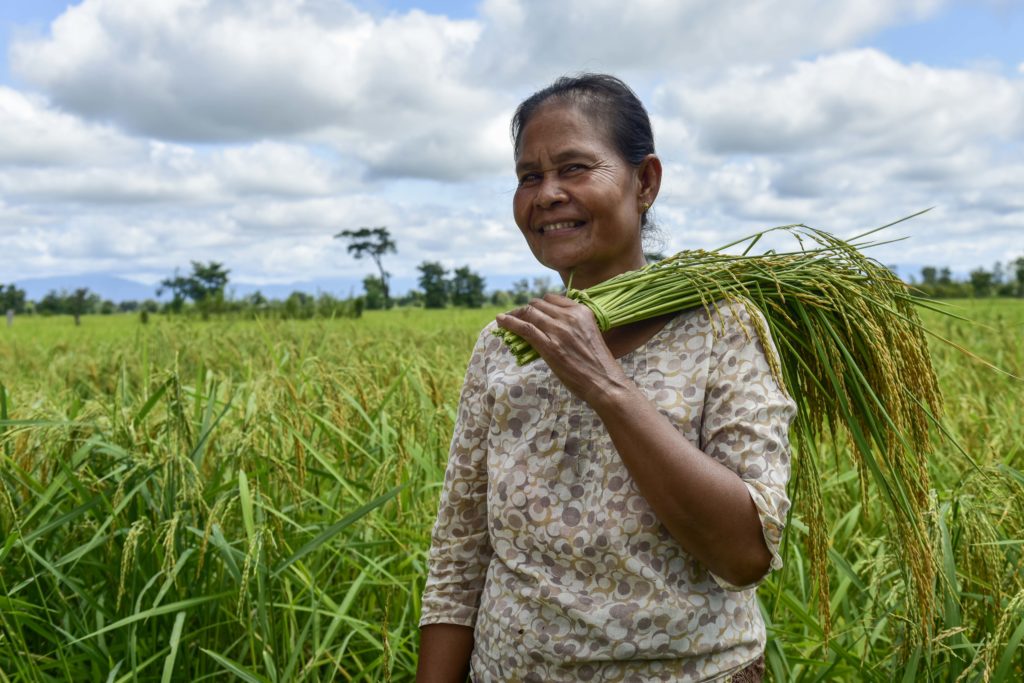On 2 December 2021, Oxfam Novib held its third and concluding global workshop on ‘Bringing Farmers to the Table’. Researchers, policy makers, farmers and funders discussed how increasing the involvement of farmers in crop development and seed diffusion can contribute to sustained global food and nutrition security. Participants presented several novel initiatives with the intention of forging new partnerships and coalitions.
In the first workshop in March, farmers and donor agencies took center stage and it was acknowledged that a collaborative process of plant breeding -where farmers and researchers identify real-life production bottlenecks and define more appropriate breeding objectives –can result in varieties that better respond to farmers’ preferences. It was recognized that there is a gap in bringing innovations to farmers, and that strong partnerships will be vital for bridging this gap and reaching scale.
In the second workshop, a month later, researchers and breeders from National Agricultural Research and Extension Systems (NARES)and CGIAR centers, universities and development practitioners were invited to identify options and priorities for collaborative breeding and seed system development programs based on(a) technical elements and conditions necessary for implementing activities at scale and (b) institutional elements to bring together farmers, organizations, NARES, extension systems and the CGIAR.
The third workshop brought together previous and new participants to discuss guiding criteria for future collaboration and to provide an opportunity for interested participants to present a pitch -a novel idea or an initiative already underway -that would stimulate new partnerships and collaborations in participatory plant breeding and varietal diversity dissemination. For all the effort collaboration requires, participants agreed that working and learning in partnerships is necessary if we are to address seed systems in their entirety and at scale, and further the contribution of smallholder farmers to agricultural research.
The pitches sparked in-depth parallel discussions and gave shape to practical ways participants may work together after the workshop. In the closing session, eager to link to and build on existing initiatives, participants expressed the need for a space such as the one provided by these workshops to continue to connect and exchange.
| Pitches presented (details in document annex) |
| 1. The BOLD project(Biodiversity for Opportunities, Livelihoods and Development), Ola Westengen, Norwegian University of Life Sciences |
| 2. Linking university curriculato on-the-ground PPB and seed system projects, Conny Almekinders, Wageningen University |
| 3. Institutionalizing Farmer field schoolson PPB in Zambia, Charles Nkhoma, Community Technology Development Trust in Zambia |
| 4. (A coalition for) an eco-regional programmeon PPB and seed system development, Anita Dohar, SD=HS programme Oxfam Novib |
| 5. Embedding demand-led variety developmentinto seed systems and consumption, Jean Claude Rubyogo, Pan Africa Bean Research Alliance (PABRA) |
| → In addition, farmer participants formed a working groupto propose ways to ensure farmer participation in future pogramme development and implementation. They were represented by Ali M. Aminou, who shared his experiences leading the Farmer Federation FUMA Gaskiya in Niger. |
Criteria guiding future collaborative work
Based on inputs from the first two workshops, criteria to guide future collaborative work were presented and discussed by participants. The original criteria proposed: Farmers/farmer organisations, NARES and International Agriculture Research Centres form equitable partnerships in which
• All parties recognize the advantages of and benefit from collaborative development and implementation of crop breeding and seed system programs that improve farmers’ access to crop diversity
• Needs of smallholder farmers and indigenous peoples are prioritized throughout the research process: from co-defining breeding objectives to seed production and dissemination activities
• Scientific rigour ensures genetic progress
• Learning follows clear pedagogical principles based on participatory methods and empowerment processes, with focus on gender equity and inclusion of youth
• Initiatives support knowledge sharing and generating workable tools and models that can be replicated and institutionalized to expand outreach and impact
There was a consensus among participants on the proposed criteria with recommendations to make (more) explicit:
• Inclusion of the most vulnerable
• Farmers’ linkage to markets (to increase resilience)
• Clarity of roles and responsibilities from the beginning
• Support to NARS in participatory methods Knowledge sharing in the form of documentation exchange, communities of practice, and platforms was particularly emphasized as a major gap to address. Scientific rigour was also confirmed as being crucial.
Main takeaways of the third workshop
1. LINKING.
“Connecting the dots”
Linking was the most repeated word of the workshop and emphasized participants’ interest in linking systems (formal/non-formal and other dichotomies), actors (farmers, students, researchers, organizations), topics (production to distribution, policy), and generally linking with one another. Linking existing work and creating channels to improve how we share and use data, experiences, and knowledge will be key.
2. MAINSTREAMING.
“This is no longer a guerilla movement ”
Ensuring efforts are sustainable and long-lasting. This means adoption of models and activities by governments, especially NARES and including national breeding institutes and genebanks, which could serve as a bridge between technology and farmers. It is important to work with governments not only to create new policies, but also to make use of the space available within current policies. “Any government is pluralistic, look for your allies”. It was noted that several aspects of the work discussed have already been mainstreamed, a strong indicator that the collective work accomplished to date by many of the participants present has been effective.
3. BUILDING ON RESULTS.
“Success in one place can drive success in another place”
It was strongly acknowledged that this work is not starting from scratch. It will be crucial to build upon the many experiences, platforms, networks, etc that have cumulatively been developed over the last years -and create a movement. Spaces like the ones offered by these workshops are essential in providing the opportunity to build collaborations and collective agendas, also as an influencing body.
4. FARMERS FIRMLY AT THE TABLE.
“Nothing about us without us”
Farmers can no longer be considered passive beneficiaries. Farmers have the will and energy to collaborate with the organisations present and to assume active roles and responsibilities in equitable partnerships. The participants proved that successful examples already exist and there are plenty of initiatives committed to following this trend.
In conclusion, it was highlighted that the legacy of this final workshop was to kickstart ideas and the real work must now begin. Oxfam Novib committed to three action points:
→ Facilitate contact between participants who want to collaborate
→ Advance its own pitch in coalition with CIRAD and CCRP (and potentially others) with a pilot in place by end of 2022
→ Check up on participants in due time: “if we don’t hear from you, you’ll be hearing from us–that’s a promise!”
Workshop 3
Workshop 3

